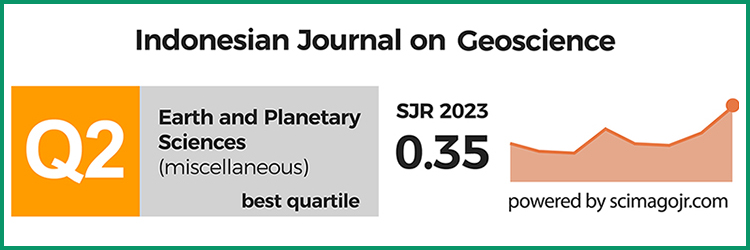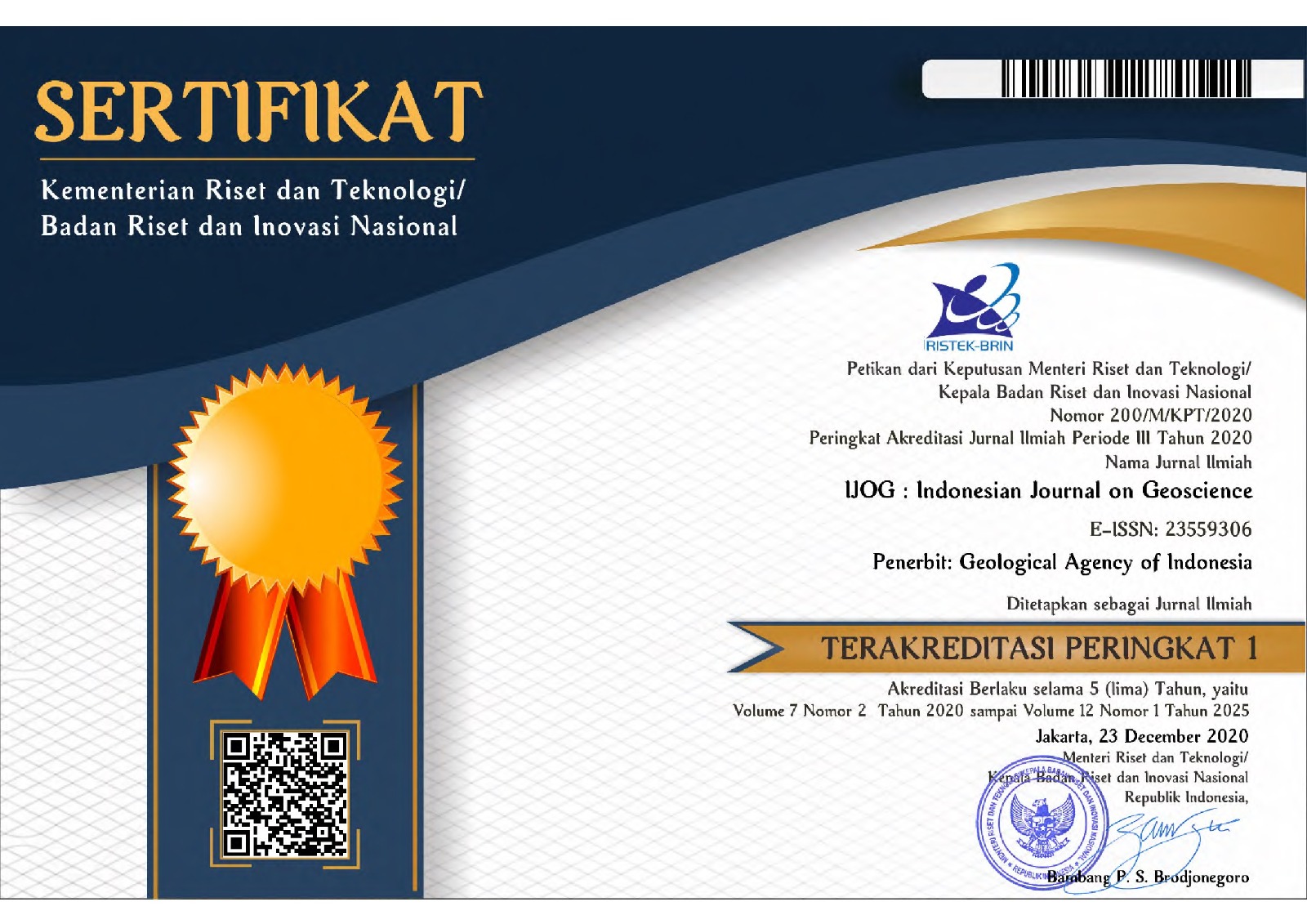Extendable Geoslicer: A New Technique in Collecting Unconsolidated Sediment and Soil Samples
DOI:
https://doi.org/10.17014/ijog.6.2.115-122Keywords:
Geoslicer, fault geology, tsunami geology, paleotsunami, Quaternary geology, sampling technique, field gearAbstract
DOI:10.17014/ijog.6.2.115-122
Geoslicer is a field gear for active fault geology studies invented in Japan, in 1997. It was formerly addressed to overcome some difficulties in studying active faults. Lately, it has also been applied for tsunami, geological, liquefaction geology, geo-archaeology, and Quaternary geology in common. Despite evidently effective in those studies, it still bears several disadvantages. Several modifications and developments have been implemented to eliminate these disadvantages. A new type geoslicer was invented as a result, Extendable Geoslicer. This new type geoslicer has been tested and showed good performance in relation with the disadvantages of the old type. Extendable geoslicer is evidently operated more easily, cheaper, handier, and works in all field types.
References
Fujiwara, O., Ono, E., Yata, T., Umitsu, M., Sato, Y., Heyvaert, V.M.A. 2013. Assessing the impact of 1498 Meio earthquake and tsunami along the Enshu-nada coast, central Japan using coastal geology. Quaternary International 308-309, 4-12.
Goto, K., Takahashi, J., Fujino, S. 2012. Variations in the 2004 Indian Ocean tsunami deposits thickness and their preservation potential, southwestern Thailand. Earth Planets Space, 64, 923–930.
Haraguchi, T., Nakata, T., Shimazaki, K., Imaizumi, T., Kojima, K., Ishimaru, K. 1998. A New Sampling Method of unconsolidated sediments by Long Geo-slicer, a Pile-type Soil Sampler. Journal of. Japan Soc. Eng. Geol. 39(3), 306-314.
Hino, T., R. Jia, R., Harianto, T., Ohgushi, K., Ichihara, T. 2013. Geoslicer and its application for soil strata analysis. Lowland Technology International 15 (1), 2-9.
Kazama, M., Shimizu, Y., Mori, T., Sento, N., Uzuoka, R. 2007. Traces of liquefaction under the shinano river bank during the 1964 Niigata earthquake. 4th International Conference on Earthquake Geotechnical Engineering June 25–28, 2007, Paper No. 1209.
Nakata, T. and Shimazaki, K. 1997. Geo-slicer, a newly invented soil sampler, for high-resolution active fault studies. Journal of Geography, 106(1), 59-69.
Normile, D. 2011. Tohoku Inundation Spurs Hunt for Ancient Tsunamis. Science 334, 1341-1343.
Sawai, Y., Fujii, Y., Fujiwara, O., Kamataki, T., Komatsubara, J., Okamura, Y., Satake, K., Shishikura, M. 2008. Marine incursions of the past 1500 years and evidence of tsunamis at Suijin-numa, a coastal lake facing the Japan Trench. The Holocene 18(4), 517–528.
Sawai, Y., Namegaya, Y., Okamura, Y., Satake, K., Shishikura, M. 2012. Challenges of anticipating the 2011 Tohoku earthquake and tsunami using coastal geology. Geophysical Research Letters 39, L21309. doi:10.1029/2012GL053692.
Shishikura, M; Sawai, Y.; Namegaya, Y. 2011. Reconstruction of the 869 Jogan Earthquake, the predecessor of the 2011 Tohoku earthquake, by geological evidence combined with tsunami simulation. Proceeding of TC302 Symposium Osaka 2011: International Symposium on Backwards Problem in Geotechnical Engineering and Monitoring of Geo-Construction, 25-28.
Takahiro WATANABE*, Norihiro HOSODA*, Noriyoshi TSUCHIYA*, Toshio NAKAMURA**, Nobuo HIRANO*, Atsushi OKAMOTO*, Fumiko W. NARA* and Tohoku University Tsunami Sediment Research Group. 2014. Radiocarbon Dating Historical Tsunami Deposits from the Sendai Plain, Northeastern Japan: Preliminary Age Model of HS Continuous Soil Sediment Series. Journal of Geography (Chigaku Zasshi) 123(6), 904–922. doi:10.5026/jgeography.123.904



















